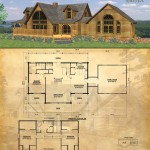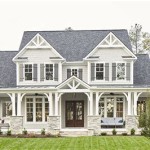Japanese House Plans: An Essential Guide
Japanese architecture is renowned for its unique blend of traditional elements with modern functionality. If you're considering building a Japanese-inspired home, understanding the essential aspects of Japanese house plans is crucial. Here's a comprehensive guide to help you create a harmonious and authentic Japanese living space.
1. Genkan: The Entrance
The genkan is the entrance of a Japanese house, often featuring a sunken floor and a step-up area to remove shoes. It serves as a transitional space between the outside and inside, providing a sense of privacy and separation.
2. Fusuma and Shoji: Sliding Doors and Screens
Japanese houses often utilize sliding doors and screens made from paper (fusuma) or translucent rice paper (shoji) to divide spaces. These movable partitions allow for灵活布局 and provide natural lighting while maintaining privacy.
3. Tatami Mats: The Traditional Flooring
Tatami mats, made from woven straw, are a defining characteristic of Japanese interiors. They create a comfortable and warm flooring option while adding a touch of tradition to the home.
4. Open Floor Plan: Flexibility and Space Utilization
Japanese house plans typically feature open floor plans that allow for flexible usage of space. Movable partitions and screens enable the creation of different room configurations to accommodate various activities.
5. Chabudai: The Low Dining Table
The chabudai, a low dining table used for both eating and socializing, is a staple of Japanese homes. It encourages family and guests to sit on floor cushions for communal gatherings.
6. Ofuro: The Traditional Japanese Bath
An ofuro is a deep soaking tub used for relaxation and purification. It is typically made of wood and features a small wooden stool for sitting. The bathroom is often located near the bedroom for convenience.
7. Engawa: The Veranda
The engawa is a covered veranda that extends from the living room or bedroom. It serves as a buffer between the interior and exterior, providing a place to relax and enjoy the garden views.
8. Kacho: The Entryway Alcove
The kacho is a small alcove near the entrance or living room. It is used to display seasonal decorations, such as flowers, plants, or ceramic pieces, adding an element of beauty and tranquility to the home.
9. Natural Materials and Simplicity
Japanese house plans emphasize the use of natural materials like wood, stone, and paper. This creates a harmonious and organic living environment. Simplicity is also valued, with clean lines, uncluttered spaces, and a focus on functionality.
10. Orientation and Nature
Japanese houses are often oriented to take advantage of natural light and ventilation. Large windows and sliding doors bring the outdoors in, while gardens and courtyards create a connection with nature.
Conclusion
By incorporating these essential aspects into your house plan, you can create a Japanese-inspired home that combines traditional elements with modern comfort. Remember that Japanese architecture is about finding balance, simplicity, and harmony, resulting in a living space that is both beautiful and functional.

Hachidori Floor Plan Japan House Design Courtyard Plans Traditional Japanese

Japanese Home Design Ideas Pictures 331 Sqm Homestyler
In Praise Of The Japanese Imagination Houseplans Blog Com

The Floor Plan Of Apartments In Japan Japanese Home Archi Designer

Japanese House Floor Plan Courtyard Google Search Traditional Style Plans

The Layout Of Ground And First Floor A Traditional Japanese House Scientific Diagram

Modern Japanese House Designs Cutting Edge Architecture From Japan

Creating A Traditional Japanese House In Live Home 3d

Japanese Small House Plans Pin Up Houses

Inoue Yoshimura Studio Designs Japanese House With Plan Shaped Like A Tetris Piece








